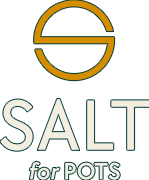
As the COVID-19 pandemic continues to impact individuals across the globe, we are learning more about the long-term effects of the virus on the body. One such effect is postural orthostatic tachycardia syndrome (POTS), a condition characterized by an abnormal increase in heart rate when standing up. Individuals who have experienced long COVID are at an increased risk of developing POTS, making it essential to understand the connection between the two conditions and how to manage symptoms effectively.
Understanding Pots
Before delving into the relationship between long COVID and POTS, it’s important to understand what POTS is and how it affects the body. POTS is a type of dysautonomia that affects the autonomic nervous system, which regulates essential bodily functions like heart rate, blood pressure, and digestion. The condition is characterized by an increase in heart rate of at least 30 beats per minute within 10 minutes of standing up, or a heart rate that exceeds 120 beats per minute when standing.
In addition to a rapid heart rate, individuals with POTS may experience symptoms such as dizziness, lightheadedness, fatigue, nausea, and shortness of breath. These symptoms can significantly impact daily life, making it challenging for individuals with POTS to perform tasks like standing, walking, or even simple household activities.

Link between long COVID and POTS
Long COVID, also known as post-acute sequelae of SARS-CoV-2 infection (PASC), is a term used to describe the persistent symptoms experienced by some individuals after recovering from COVID-19. These symptoms can include fatigue, shortness of breath, muscle aches, and brain fog, among others. Increasingly, healthcare professionals are recognizing that long COVID can lead to POTS in some individuals.
Studies have shown that COVID-19 can cause damage to the autonomic nervous system, leading to autonomic dysfunction and subsequent development of POTS. In a study of individuals with long COVID, 60% of participants experienced an increase in heart rate upon standing, and 30% met the diagnostic criteria for POTS. This suggests that individuals who have had COVID-19 should be vigilant about monitoring their symptoms and seeking medical attention if they experience any signs of POTS.
Diagnosis and Treatment of POTS
If you suspect that you may have POTS, it’s important to seek a proper evaluation from a healthcare professional who specializes in autonomic disorders. Diagnosis typically involves a tilt table test, in which an individual is strapped to a table that tilts from a horizontal to a vertical position, while their heart rate and blood pressure are monitored. You can also use our at home POTS test above. While this is not a diagnosis, it can be a helpful tool in showing to your physician when speaking with them about your symptoms.
Treatment for POTS can involve a combination of medication, lifestyle changes, and physical therapy.Studies have shown that regular exercise can help reduce symptoms of POTS, including improving heart rate and blood pressure regulation. Specifically, structured workout programs, such as SALT for POTS, can provide a safe and effective way for individuals with POTS to engage in exercise and manage their symptoms.
SALT for POTS is a program that’s designed to help build resilience, strength and develop a positive mindset to manage POTS symptoms. SALT recognizes that POTS is a complex condition that requires a multifaceted approach, including physical and social support, to help individuals lead the life they want to lead.

Coping with POTS and Long COVID
In addition to seeking medical treatment and support from programs like SALT for POTS, there are several steps individuals with POTS and long COVID can take to manage their symptoms and improve their quality of life. Some strategies to consider include:
- Gradual exercise: Although exercise can be challenging for individuals with POTS, gradually increasing physical activity levels can help improve heart rate and blood pressure regulation. SALT for POTS provides guided workouts that are specifically designed for individuals with POTS, making it easier to engage in exercise safely and effectively.
- Mindfulness practices: Practices like meditation, deep breathing, and yoga can help reduce stress and promote relaxation, which may help alleviate some POTS symptoms.
- Proper hydration: Staying hydrated is essential for individuals with POTS, as dehydration can worsen symptoms like dizziness and lightheadedness. Drinking plenty of water and electrolyte-rich fluids can help support blood pressure regulation.
- Support network: Connecting with others who understand the challenges of POTS and long COVID can be incredibly helpful for managing symptoms and improving mental health. SALT for POTS offers a community platform for individuals to connect and share their experiences.
Long COVID and POTS are complex conditions that require a multifaceted approach to manage symptoms and improve quality of life. With the right resources and support, individuals with POTS and long COVID can find relief and regain a sense of control over their health. SALT for POTS is one program that is specifically designed to help individuals manage their POTS symptoms and reclaim their lives. If you suspect you may have POTS or are experiencing long COVID symptoms, it’s important to seek proper evaluation and support to find relief and healing.





